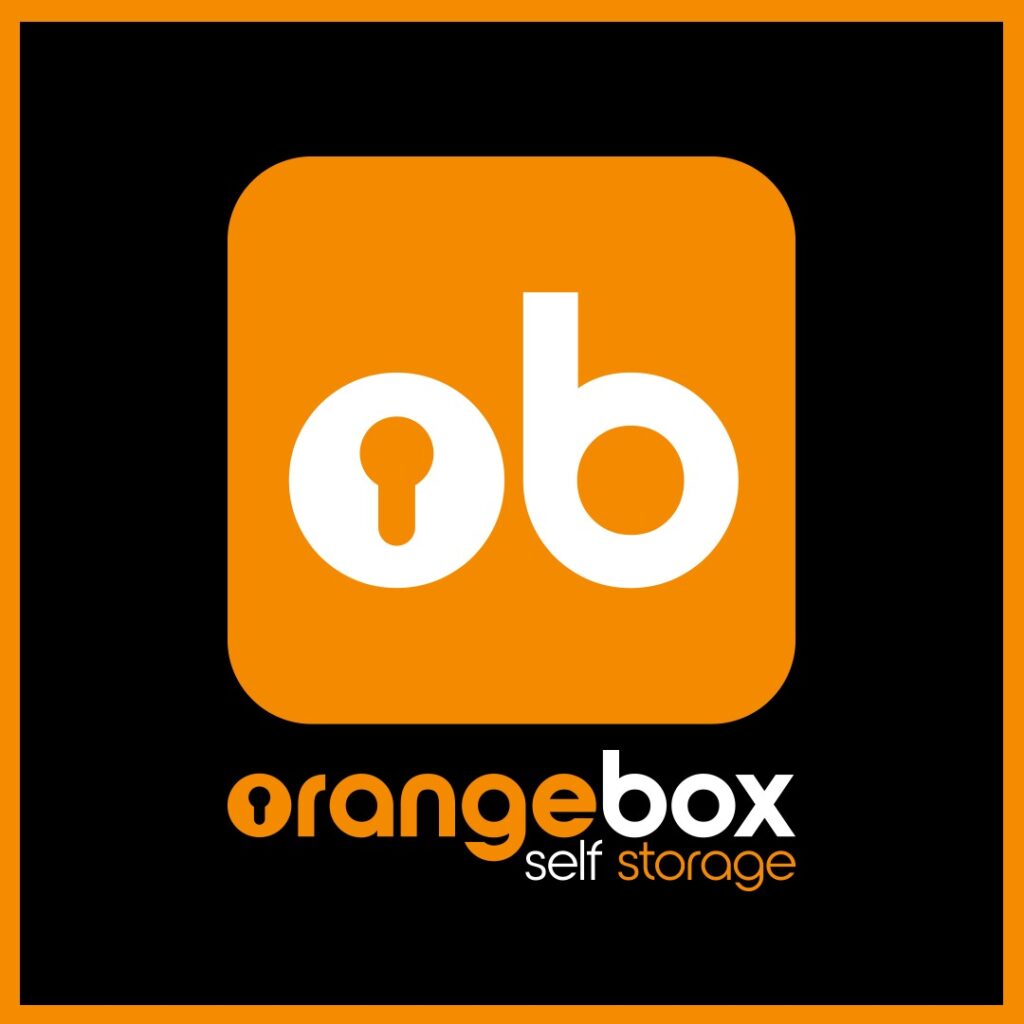Choosing the right storage option depends on your needs: cost, security, and item protection. Indoor storage offers climate control and advanced security, ideal for delicate items like electronics or antiques. Container storage is budget-friendly with 24/7 access, perfect for durable goods like tools or inventory.
Key Differences:
- Indoor Storage:
- Climate-controlled (18-24°C, <55% humidity).
- Advanced security (CCTV, biometric access).
- Costs £40-£60/week.
- Best for sensitive or valuable items.
- Container Storage:
- No climate control, basic padlock security.
- Costs £12-£18/week.
- Ideal for durable goods or frequent access needs.
Quick Comparison:
| Feature | Indoor Storage | Container Storage |
|---|---|---|
| Cost (Weekly) | £40-£60 | £12-£18 |
| Climate Control | Yes (18-24°C) | No |
| Security | Advanced (CCTV, locks) | Basic (padlock) |
| Access | Limited hours | 24/7 drive-up |
| Best For | Sensitive items | Durable goods |
Tip: Use indoor storage for valuables and container storage for cost-effective, durable storage needs.
Main Differences Between Storage Types
What Indoor Storage Offers
Indoor storage facilities stand out in three major areas: security, climate control, and protection from external elements. These multi-story buildings are equipped with advanced security systems and controlled environments, making them a go-to choice for safeguarding items like electronics, antiques, and important documents.
According to industry data, theft rates in these facilities remain impressively low – under 1% annually.
"Multi-layered security systems in indoor facilities have revolutionised storage safety, bringing theft incidents down to unprecedented levels under 1% annually".
The climate-controlled environment also minimises risks like mold and pest damage, offering 40% better protection against these issues compared to outdoor units.
What Container Storage Offers
Container storage focuses on practicality and durability, providing ground-level access and heavy-duty steel construction. These features make it especially useful for businesses, with 68% of commercial users choosing containers for easy inventory rotation.
Common uses for container storage include:
- Construction equipment
- Business inventory
- Seasonal outdoor furniture
- Vehicles and machinery
Additionally, 40% of boat owners prefer container storage for their watercraft, highlighting its versatility. However, it’s worth noting that 15% of users have reported rodent issues during extended storage periods.
To optimise container storage, consider adding moisture control measures, such as desiccant packs, to protect items from humidity. The combination of steel durability and drive-up convenience makes these units ideal for frequent access and heavy-duty applications.
How to Choose Between Indoor and Drive-Up Storage Units
Side-by-Side Comparison
Here’s how indoor storage and container storage stack up when it comes to key features and costs:
Key Operational Differences
| Feature | Indoor Storage | Container Storage |
|---|---|---|
| Access Hours | Typically 8am-6pm with restrictions | 24/7 drive-up access |
| Moisture Control | Built-in climate control | Requires £50-75 dehumidifiers |
| Loading Ease | 15-20 min average access time | Direct vehicle access |
| Space Options | Up to 300 sq ft units | Up to 400 sq ft units |
Indoor storage provides better protection for sensitive items, thanks to built-in climate control. On the other hand, container storage offers unmatched convenience with drive-up access, which 68% of business users say improves their inventory management.
Cost Breakdown
Here’s a look at pricing in the Nottingham area:
| Cost Factor | Indoor Storage | Container Storage |
|---|---|---|
| Base Rate (50 sq ft) | £45/month | £30/month |
| Climate Control | +£15/month | Not available |
| Insurance Requirements | £8/month (£2,000+ coverage) | Optional (owner insurance) |
| Access Fees | £25-50 after-hours pass | Included |
| Security Deposit | £25-50 | £25-50 |
| Additional Protection | Included in climate control | £15-20 monthly for moisture control |
For long-term storage (over 12 months), container units offer around 33% savings. However, for shorter durations (under 6 months) or climate-sensitive items, indoor storage may be the better choice when factoring in protective measures. Insurance claims also differ: indoor units report 1 claim per 25 units, compared to 1 per 12 for containers. This may explain why many commercial users favor the accessibility of container storage.
How to Pick the Right Storage
Cost Factors
Think about both upfront and ongoing costs. For businesses that need frequent access to inventory, container storage can be a smart choice. For example, Nottingham landscapers reported saving 40% by using container storage for their daily equipment needs. On the other hand, if you’re storing items like sensitive electronics or high-value inventory, indoor units with built-in climate control could save you money in the long run by avoiding damage-related costs.
Protection Needs
The type of items you’re storing should guide your decision. Indoor units typically maintain a temperature of 18-24°C and humidity levels between 40-60%. Here’s a quick comparison to help you decide:
| Item Type | Best Option | Why? |
|---|---|---|
| Electronics | Indoor | Protects against moisture damage |
| Musical Instruments | Indoor | Prevents warping and cracking |
| Construction Equipment | Container | Budget-friendly for durable items |
| Business Inventory | Depends | Balance value and protection needs |
Access Requirements
How often you need to access your storage matters. Container storage usually provides 24/7 drive-up access at 78% of facilities, while indoor units typically offer 12-hour access on weekdays. This difference can have a big impact on your operations.
"Our furniture reselling business reduced loading time by 40% using indoor units’ logistics support, despite limited access hours", shared a Nottingham retailer.
If your business requires frequent access, container storage might be the better fit. For items that need climate control and less frequent access, indoor storage is the way to go.
These factors set the stage for practical examples in the next section.
sbb-itb-6689830
When to Use Each Storage Type
Home Storage Examples
Deciding on storage depends heavily on what you’re storing and the conditions it requires:
Indoor storage is ideal for protecting sensitive and valuable household items. A survey in Nottingham revealed that 78% of residents used indoor storage for items like antique furniture, family heirlooms, and seasonal clothing. With climate control maintaining temperatures between 18-24°C, it helps prevent damage to delicate materials.
For instance, a vintage furniture collector saved £3,500 in restoration costs by using indoor storage during seasonal changes. The controlled environment prevented issues like wood warping and fabric wear.
| Item Type | Key Benefit |
|---|---|
| Antiques & Art | Protects against material damage |
| Garden Tools | Convenient drive-up access |
| Holiday Decorations | Shields from humidity |
| Renovation Materials | Affordable storage solution |
Business Storage Examples
For businesses, storage decisions can influence efficiency and costs:
Tech companies have avoided moisture damage by choosing indoor storage. On the other hand, container storage is often a better fit for construction and landscaping businesses, offering 24/7 access for flexible operations.
The choice usually depends on the value of the items and how often access is needed. For example, e-commerce businesses storing non-perishable inventory often go for container storage, which can cut monthly costs by 30-40% compared to indoor units. However, businesses handling sensitive documents or high-value inventory prefer indoor storage for its added security and controlled environment.
Seasonal businesses also weigh durability against cost. Restaurant owners storing patio furniture often use containers, saving around 40% on storage costs. For durable items, cost savings typically outweigh the need for climate control.
Storage Options in Nottingham and Nearby Areas
Local providers like Orange Box Storage offer tailored storage solutions to meet diverse needs.
Orange Box Indoor Units
Orange Box’s indoor units in Nottingham provide top-level security and maintain a controlled temperature range (18-24°C), making them perfect for storing electronics and important documents. Business clients can also take advantage of insurance discounts of up to 30% when using these units.
Their advanced security and monitoring systems ensure items are safe, while flexible access options make it convenient for users.
Orange Box Container Units
The Nottingham container yard offers access from 5 AM to 11 PM and includes loading bays. Prices range from £12-£18/m². For businesses needing extra protection, there are insulated pods available for an additional £8/m², featuring anti-humidity flooring.
Specialised container solutions for tech businesses include:
- Insulated pods with HVAC upgrades (+£8/m²)
- Anti-humidity flooring
- Enhanced security features
This flexible setup is particularly cost-effective and supports a hybrid storage approach. According to 2024 company data, 22% of customers use both indoor and container storage. For example, retailers often store sensitive documents indoors while keeping seasonal inventory in containers.
"Hybrid storage saves 30% while protecting sensitive stock"
Making Your Storage Choice
When deciding on the right storage option, it’s important to weigh your needs carefully. Let’s break it down:
Key Factors to Consider
Your choice should hinge on three main factors:
- Item Protection: Indoor storage is better suited for safeguarding valuable or delicate items.
- Cost: Container storage is a budget-friendly option for durable goods.
- Security: Indoor facilities tend to have lower theft rates. In fact, theft rates for container storage in urban areas are three times higher, based on insurance data.
Storage Suggestions Based on User Needs
For Households
The duration and type of items you’re storing will guide your decision. If you’re storing valuable belongings for a long time, climate-controlled indoor units are ideal. For short-term storage of durable items, containers can be a practical option.
For Businesses
Several factors come into play for businesses:
- How quickly inventory turns over
- Insurance costs (indoor units can reduce premiums by up to 25%)
- Future growth needs
For example, in Nottingham landscaping projects, using containers improved workflow efficiency.
"Hybrid storage saves 30% while protecting sensitive stock"
A common strategy, used by 72% of Orange Box clients, involves these four steps:
- Assess the climate sensitivity of items.
- Determine the storage timeline.
- Estimate how often you’ll need access.
- Allocate your budget based on protection needs.
FAQs
What is the difference between self-storage and container storage?
Here’s a breakdown of the key differences that can affect your daily usage:
Access and Security
Indoor storage units often provide 24/7 access with advanced features like biometric entry, along with round-the-clock monitored security. On the other hand, container storage typically has restricted gate hours and relies on user-supplied locks for security.
Protection and Climate Control
The level of protection you need can make a big difference. For example:
"A Nottingham bakery avoided £12k in losses by storing vintage baking molds in climate-controlled units during renovation"
This highlights how climate control can be crucial, especially for items like metal that are prone to damage without proper conditions.
Cost Breakdown
| Feature | Indoor Storage | Container Storage |
|---|---|---|
| Base Monthly Cost (10×10 ft) | £120 | £80 |
| Additional Insurance | Standard policy | +£15-25/month for weather coverage |
| Climate Control | Included | Not available |
| Pest Management | Included (professional service) | Requires £10-15 monthly treatments |
Moisture and Environmental Protection
Moisture control is another area where indoor storage has the edge. Indoor units come with built-in systems, while 42% of container storage users report needing to add dehumidifiers. If you’re storing items sensitive to moisture, make sure to follow the moisture control tips mentioned earlier.



